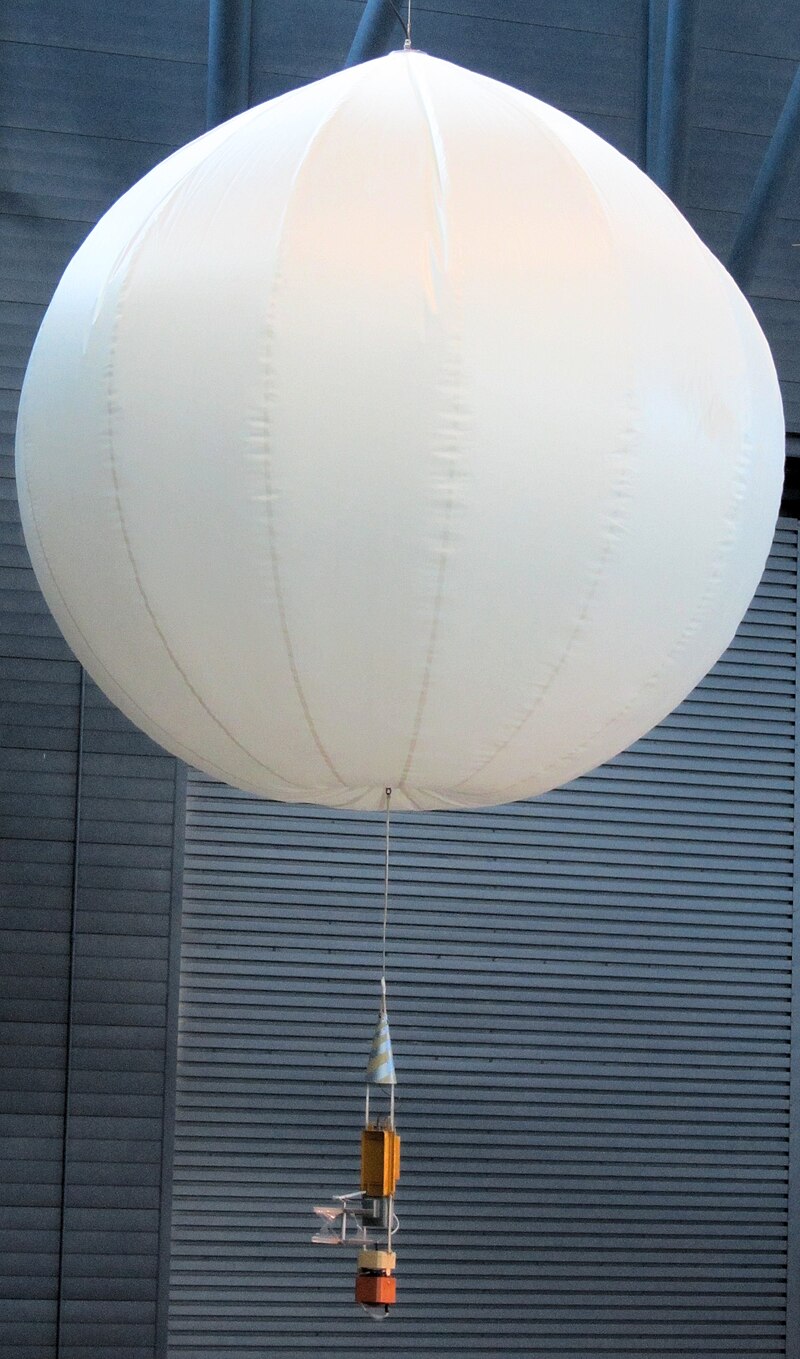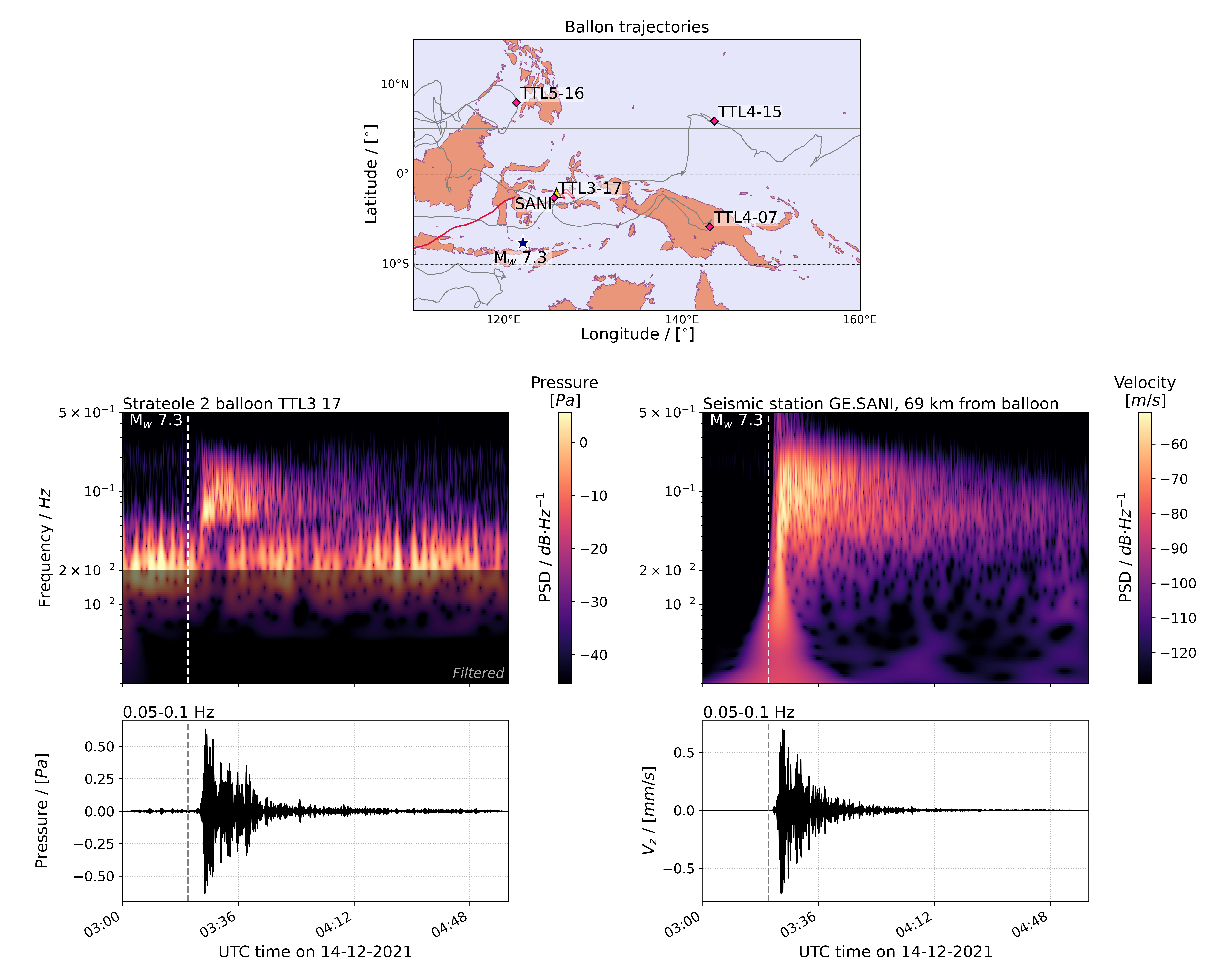AIR: Airborne Inversion of Rayleigh waves
Understanding Venus’ interior structure is critical to determine its origin and evolution and explain why conditions on this planet are so drastically different than on Earth. On Earth, seismic waves generated by seismic events such as Earthquakes and recorded by seismometers at the ground are utilized to constrain our planet down to its very core. However, deploying seismometers on Venus is significantly more technologically challenging due to its harsh surface conditions (more than 460°C and pressure near 90 atmos.). However, Venus conditions are fare more clements in the higher atmosphere (50-60 km alt.) where they are close to Earth conditions. Beyond Venus, deployments are also extremelly difficult in Earth’s remote regions such as polar regions or over the Oceans where the subsurface is still poorly constrained.
Could we deploy seismometers in the atmosphere to sense seismic waves and sense Venus interior? The short answer is yes!

The same way a drum emits sound when it vibrates, Earth’s surface generates inaudible acoustic waves, called infrasound, when an Earthquake hits. Exciting new developments have shown that the sound of seismic events can be recorded at high altitudes from a balloon and can inform us about the subusurface. However, very few seismic events have been detected from a balloon and we still ignore how much we can learn from these sound waves. AIR will address key theoretical and practical issues by taking advantage of balloon data collected by the Jet propulsion Laboratory and the Swedish Institute of Space Physics during large-scale balloon campaigns, and by relying on stateof-the-art simulation tools. The main objective is to build a model to automatically retrieve seismic source and subsurface structures from sound waves and explain how accurate this new technique can be for future planetary missions.
AIR will empower balloons to explore distant worlds and provide unique insights on the deep underground in remote regions where current technology is lacking.
Next steps
AIR will develop numerical models to increase the understanding of the internal structure of the planet Venus through the use of data from sound signals from seismic events collected using balloon platforms.
The main goal is to create a model that automatically retrieves information about the seismic source and structures in the underground based on the observation of sound waves in the atmosphere.
AIR is expected to push the frontier of the use of balloon technology for the detection and analysis of natural and man-made events on our own planet, Earth, as well as on other planets.
WP1: Data Analysis
Few seismic events from balloons have been recorded so far, but recently collected data from large balloon campaigns (Brissaud et al., 2021; Garcia et al., 2022), carried out by the Jet Propulsion Laboratory in the USA and the Swedish Institute of Space Physics, will be made available to the AIR project. Using state-of-the-art simulation tools, AIR will reprocess data systematically to unveil new arrivals and extract accurately dispersion information from Rayleigh wave arrivals. We will also investigate the possibility of automatically detecting seismic arrivals in balloon data with machine learning tools.

WP2: Sensitivity Analysis
Understanding the variations of balloon-borne obserbations with seismic and acoustic path effects is key to understand both (1) how much information about the subsurface is contained in the acoustic waveforms once waves have gone through complex velocity models, and (2) how much should be included in the inversion framework. During WP2, we will produce a large-scale synthetic dataset and analyze seismic-to-acoustic waveform correlations with analytical and machine learning tools.
WP3: Inversion framework
Once arrival are detected and our understanding of source-to-balloon propagation effects are understand, we need to build a framework to connect acoustic waveforms to source properties and subsurface velocities. We will inform our inversion model with results from our sensitivity analysis in WP2 to understand the expected uncertainties associated with propagation effects such as topography and lateral velocity variations. We will build prior uncertainty models based on physics-based subsurface models constructed from geodynamical models or gravity inversions (Dumoulin et al., 2017). Multiple inversion approaches will be tested including Monte-Carlo Markov Chain (MCMC) optimization and validated against synthetic and observed data.
- Brissaud, Q., Krishnamoorthy, S., Jackson, J. M., Bowman, D. C., Komjathy, A., Cutts, J. A., Zhan, Z., Pauken, M. T., Izraelevitz, J. S., & Walsh, G. J. (2021). The first detection of an earthquake from a balloon using its acoustic signature. Geophysical Research Letters, 48(12), e2021GL093013. https://doi.org/10.1029/2021GL093013
- Garcia, R. F., Klotz, A., Hertzog, A., Martin, R., Gérier, S., Kassarian, E., Bordereau, J., Venel, S., & Mimoun, D. (2022). Infrasound from large earthquakes recorded on a network of balloons in the stratosphere. Geophysical Research Letters, 49(15), e2022GL098844. https://doi.org/10.1029/2022GL098844
- Dumoulin, C., Tobie, G., Verhoeven, O., Rosenblatt, P., & Rambaux, N. (2017). Tidal constraints on the interior of Venus. Journal of Geophysical Research: Planets, 122(6), 1338–1352. https://doi.org/10.1002/2016JE005249

